Introduction
Have you ever wondered about the fascinating world of plants that consume insects and small animals for survival? With their extraordinary adaptations, Carnivorous plants captivate the imagination of botanists and nature enthusiasts alike.
In this article, we will identify the attractive realm of 10 Carnivorous Plants, delving into their unique characteristics, habitats, and the mechanisms they employ to capture and digest their prey. These flesh-eating plants have evolved remarkable strategies to thrive in nutrient-poor environments, making them a compelling subject of study. From the famous Venus Flytrap to the lesser-known Bladderworts, each of these 10 Carnivorous Plants showcases nature’s incredible diversity and ingenuity.
Join us as we uncover the secrets behind these captivating plants and their essential roles in their ecosystems. By the end of this journey, you’ll have a newfound appreciation for the astonishing adaptations of these 10 Carnivorous Plants.
Read also: Biodiversity Crisis: 5 Shocking Ways We’re Losing Nature’s Riches
What Are the Carnivorous Plants?
Definition and Characteristics
Carnivorous plants adapt to or get most of their nutrients from grabbing and eating animals, protozoans, insects, other arthropods, and sometimes small mammals and birds. They still acquire all their strength from photosynthesis.
True carnivorous plants sometimes originate independently at least 12 times in five varieties of flowering plants and are symbolized by an excess of a dozen genera.
The most significant traits of carnivorous plants include capturing prey by grabbing it, destroying it, dissolving the captured prey, consuming nutrients from the killed and dissimilated prey, and utilizing those nutrients for expansion and development.
Read also: Circles of Life: Decoding the 5 Important Biogeochemical Cycles of the Ecosystem
Evolution and Adaptations
- Carnivorous plants develop into swamps and bogs, specifically in nutrient-poor bodies of water or tropical soils, all habitats short on nitrogen and phosphorus required for growth.
- Pitbull traps grab prey in a rolled lead with a pool of digestive enzymes or bacteria. Flypaper traps use sticky mucilage.
- Snap traps help by using rapid leaf movements. Bladder traps suck in prey along with the bladder, which initiates an internal vacuum.
- Lobster pot traps, or eel traps, utilize inward-pointing hairs to force prey to move to a digestive organ.
Read also: Soil Formation Process: 1 Glimpse From Rock to Rich Earth
Types of Carnivorous Plants
Active traps:
The Venus flytrap (Dionaea muscipula) is the most renowned carnivorous plant. The trap is made up of dual clamshell-like halves, which are lined with many guard hairs and minute nectar glands. A well-developed plant may be from 3 to 12 or more traps. The interior region of each leaf is filled with minute digestive glands that give the leaf surface a bumpy appearance.
The inner leaf half mainly has three small intricate hairs in a triangular pattern. The longer the time between the two stimuli, the slower the pace of closure.
Semi-active traps
This category of plants includes plants like sundews and butterworts. These typically have various sticky glands that cover the upper leaf surfaces, which act like flypaper, and once they get captured, the margin of the leaves may roll over to envelop the prey.
These green and red leaves are enveloped with glistening droplets of mucilage that glisten in the sunlight.
Passive traps
Carnivorous plants, or flesh-eating plants, increase a line of traps. These traps consist of pitcher plants, cobra lily, and even the seeds of the Shepherd’s purse, in addition to Bromeliads.
Pitcher and their decorative tubular trap with leaves over with hoods represent some thrilling grabbing frameworks in carnivores.
They take the prey to the pitcher, which opens with bright colors and an intoxicating scent, making the victim fall into the trap.
Top 10 Carnivorous Plants
1. Venus Flytrap (Dionaea muscipula)
Venus flytrap is a flesh-eating plant of the sundew family. It is recognized for its useful habit of catching and dissipating insects and other tiny animals.
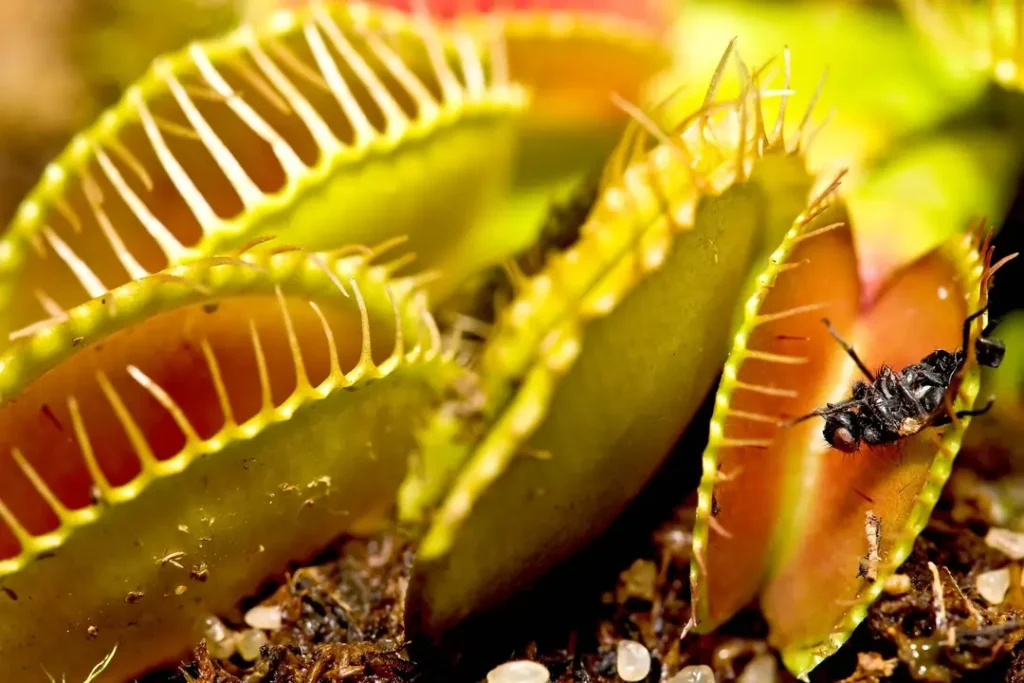
This plant develops from a bulblike rootstock that carries small white flowers at the tip of an erect stem 20-30 tall. The leaves are nearly 8-15 cm long, with a blader in the midline, so there are two circular lobes with sharp teeth along the margins. The trap that is captured dies after grabbing three or four insects.
2. Pitcher Plants (Nepenthes and Sarracenia)
Pitcher plants are flesh-eating plants in the shape of pitchers that form a passive pitfall trap. Old-world pitcher plants are from the family of Nepentheceae.
They’re found in many habitats, from poor soil conditions to pine barrens to sandy coastal swamps. Several pitcher plants also use leaf litter or animals for nutrients.
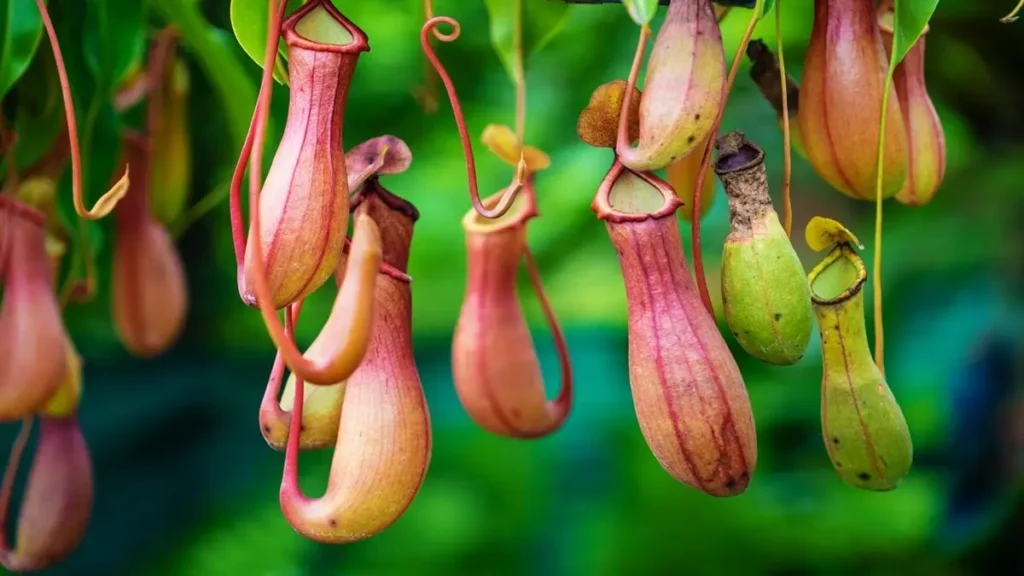
The North American species, Sarracenia has very complex body structures that prevent the accumulation of a huge amount of rainwater.
Read also: Animals of North America: 20 Astonishing Creatures You Must Discover
3. Sundews (Drosera)
Sundews are carnivorous plants in the family Droseraceae; they are present in Australia’s tropical and temperate regions and are common in bogs and fens. In addition to sandy, acidic soils, they do not give meadows with energy but supply, specifically nitrogen, in poor soil.
Read also: 5 Mind-Blowing Reasons Why Asking “Is Australia an Island?”
The features of these plants include curving size, which ranges from 10 to 25 cm above the basal leaves. The leaves are particular rosettes that are less than 2.5 cm in diameter.
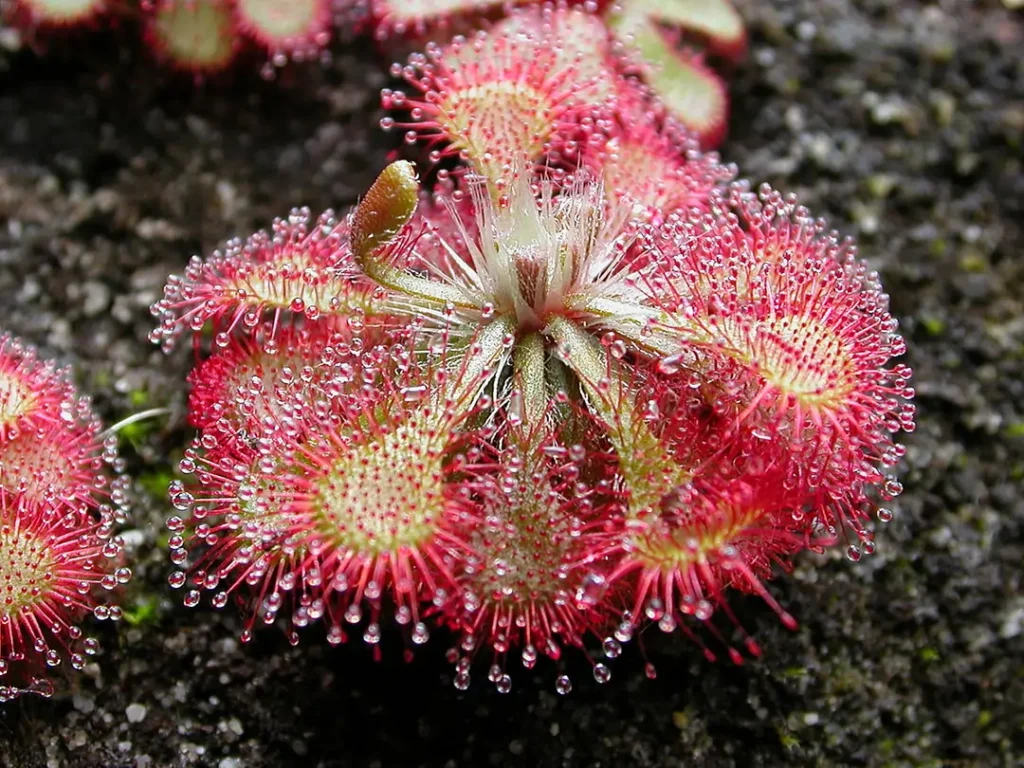
The upper area is enveloped by a flexible gland that is tipped with trichomes. The trapped insects are engulfed in a line of sticky glands, sometimes called tentacles, and dissipated by enzymes.
4. Bladderworts (Utricularia)
Utricularia, also known as bladderworts, are carnivorous plants. There are 233 species. They appear in fresh water and wet soil as terrestrial or aquatic species and are found across Antarctica.
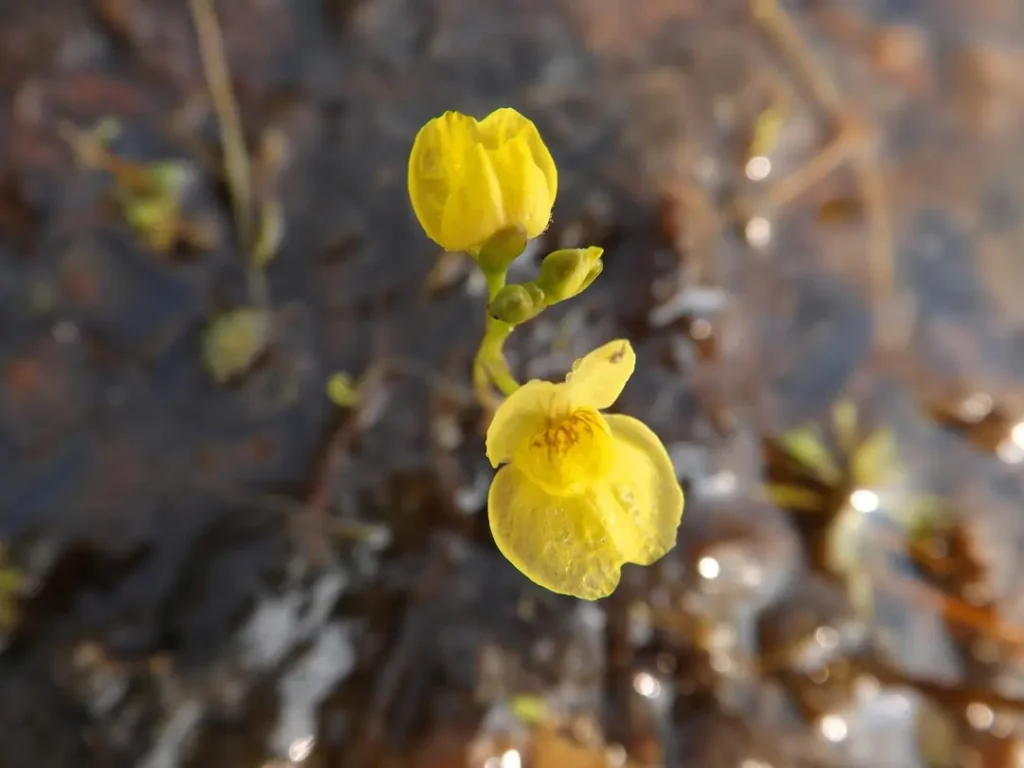
Read also: Antarctica from Space: A Visual Story of a Continent in Crisis
They are mainly cultured because of their flowers, which are compared with those of snapdragons, especially among plant enthusiasts. All Utricularia are flesh-eating plants that grab small organisms using bladders, such as traps. The primary part of bladderwort mainly lies below the surface and sometimes makes photosynthetic leaf shoots.
Read also: Freshwater vs. Saltwater: Do You Know 3 Most Important Distinctions?
5. Butterworts (Pinguicula)
It is also a carnivorous plant that draws nutrients by grabbing and eating insects using its sticky leaves. It compensates for their lack of nutrients, which they do not acquire from the acidic bogs and ferns in which they live.
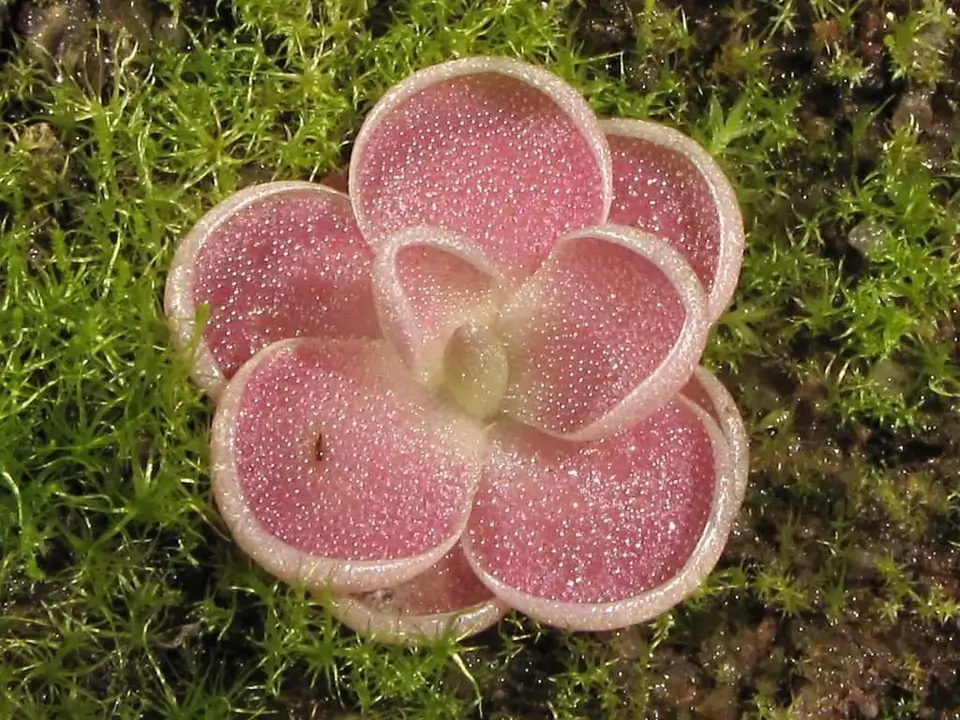
Butterworts are commonly yellow-green and sticky leaves that are flat to the ground and shaped like stars. They create two or three upright flower stalks that contain small, deep purple flowers.
They are widely distributed in Scotland, Wales, and Northern Ireland, located northwest of England.
6. Cobra Lily (Darlingtonia californica)
Cobra lily is another carnivorous plant native to southern Oregon and northern California but has unique characteristics.
It has a rounded head of teh pitcher, which opens downward just like other pitcher plants; in addition, the pint fork lead at the mouth of the plant resembles a snake.
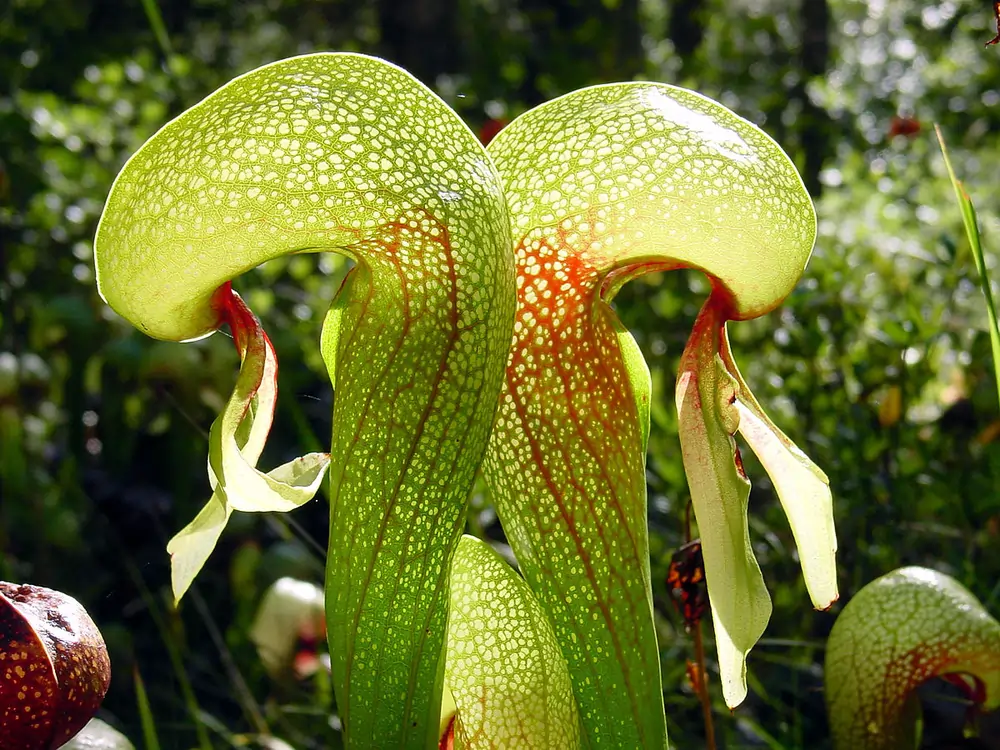
The roots of these plants are long underground stolons exposed to slow-moving waters, and they make flowers that are teh size of 1 to 3-foot flower stalks, which are warm.
Read also: 10 Heartbreaking Stories of Endangered Species in California
7. Tropical Pitcher Plants (Nepenthes)
These are flesh-eating plants that are present in Southeast Asia. They are named for the pitchers eventually when the leaves are filled with “digestive fluid” to catch bugs. Species like Nepenthes truncata, veitchii, and Nepenthes ventricosa and their hybrid create some nice house plants.
Elite hybrids of tropical pitcher plants are among the most popular carnivorous plants.
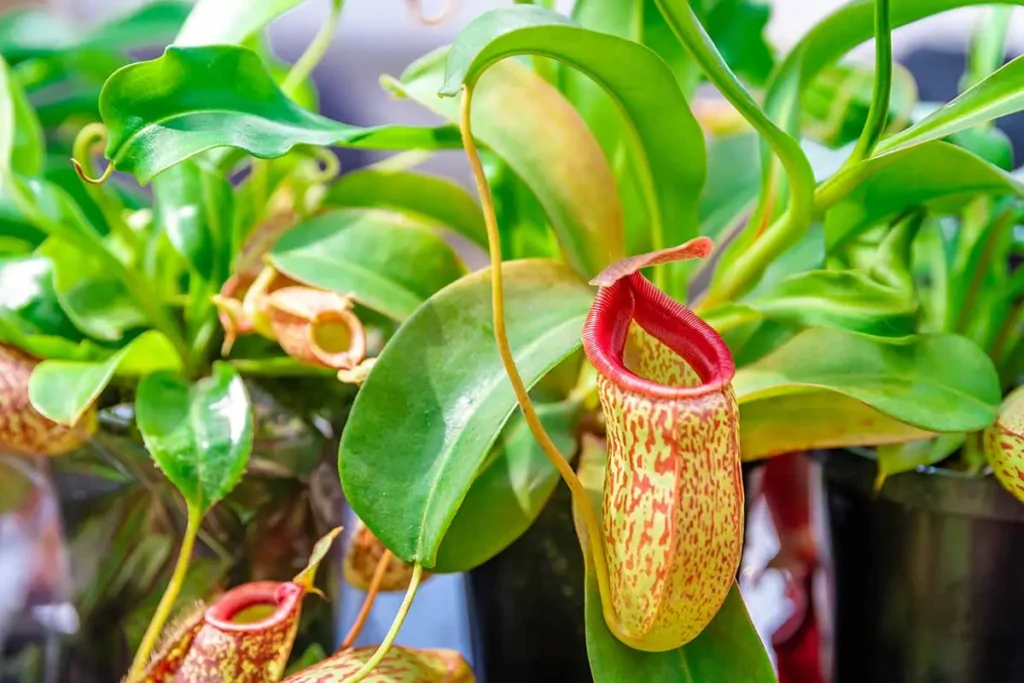
Nepenthes require a lot of bright, indirect light, and even though humidity is helpful, light is the most important feature.
Read also: Light Pollution Exposed: Unveiling Its Alarming Effects on Our Environment and Health
8. Waterwheel Plant (Aldrovanda vesiculosa)
Waterwheel plants, also known asaldrovanda vesiculosa, are another flesh-eating plant that grabs small aquatic invertebrates that capture similar insects like the Venus flytrap. The traps are kept in whorls around the central, free-floating stem.
This is known for its ability to move fast and is a rootless aquatic plant.
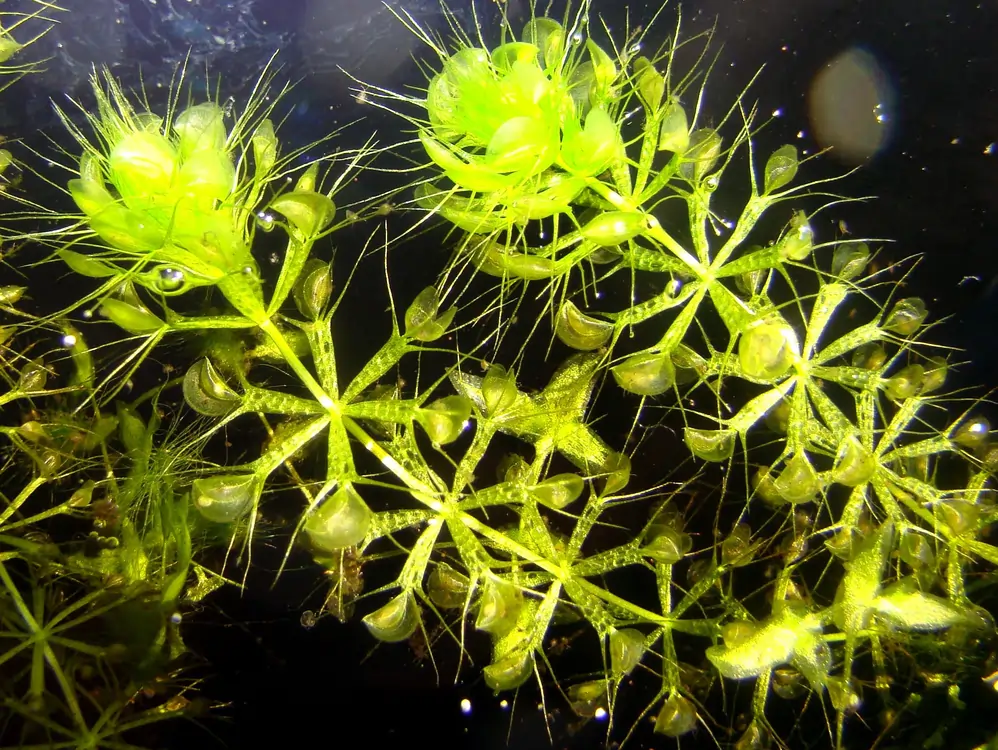
They are spread across Europe, Africa, Asia, and Australia. The plant includes stems that reach a length of 6-40 cm. The 2-3 mm trap leaves grow in whole among 5-9 in close succession. The traps primarily include two lobes to form a snap equivalent to the Venus flytrap.
9. Albany Pitcher Plant (Cephalotus follicularis)
Cephalotus, also known as the Albany pitcher plant, is another carnivorous plant comprising small, developing, and herbaceous species. Evergreen leaves that underground rhizomes are very simple with a leaf blade and lie close to the ground.
Read also:
These insectivorous leaves are tiny and appear like moccasins that form a pitcher of teh common name.
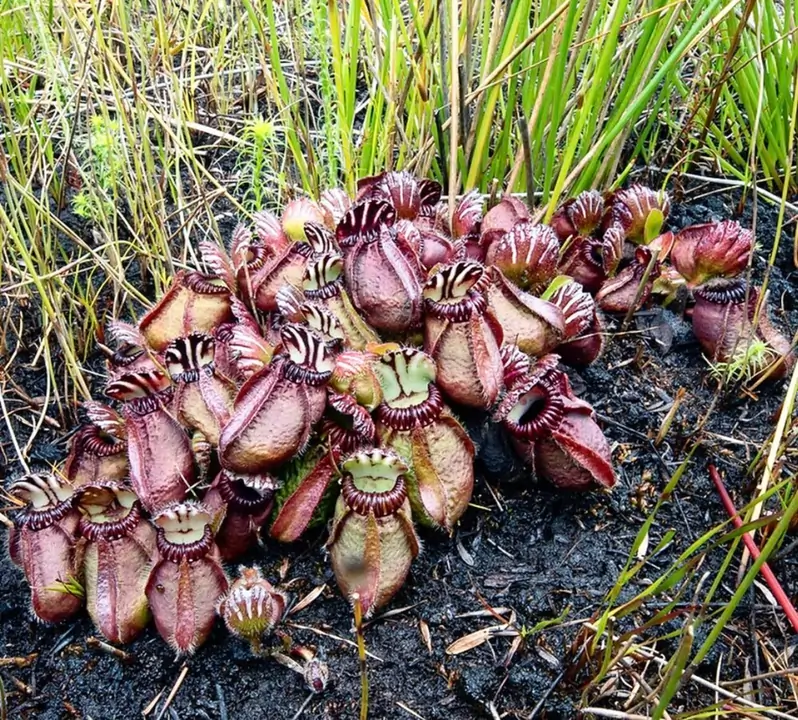
In the cooler regions, they have natural dormancy, which lasts about 3-4 months. The temperature drop influences it and lowers light levels.
Read also: Temperature Inversion: Understanding the Atmospheric Anomaly
10. Genlisea (Corkscrew Plants)
Also known as the corkscrew plants, these are little, semi-aquatic, tropical carnivorous plants equivalent to terrestrial bladderworts.
Protozoas are their prey. Chemotactically attracted to plants; protozoa enter their subterranean forked and snare leaves.
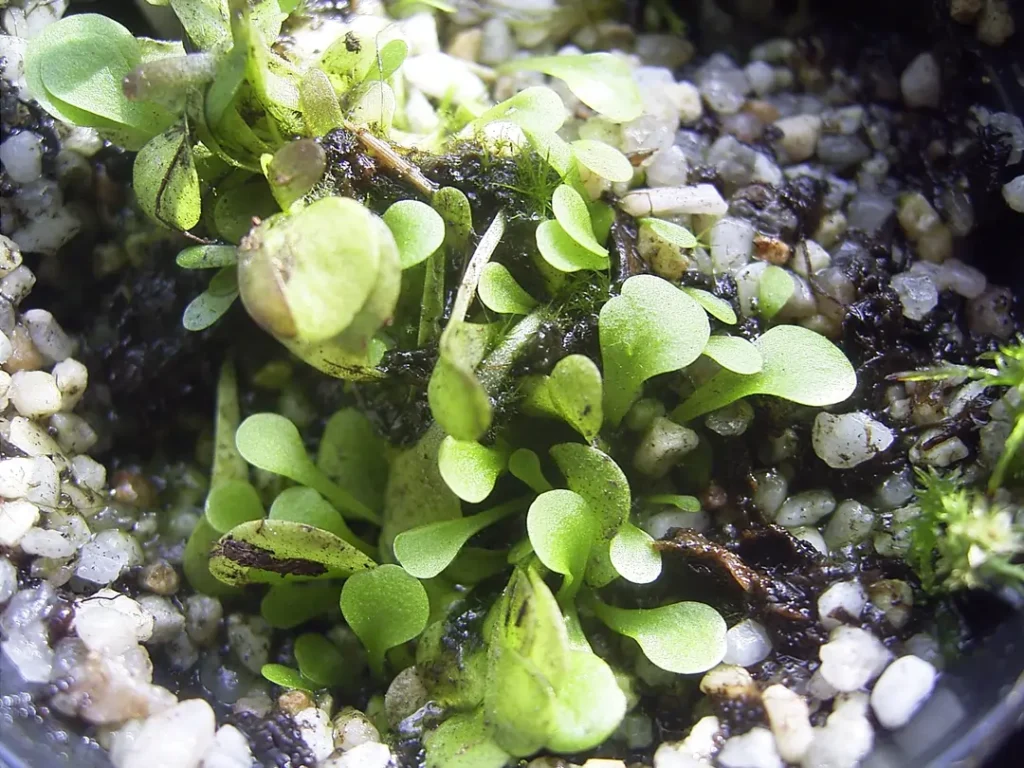
Seeds, especially, originate from genetically distinct individuals. Genlisea may be propagated from seeds owned on damp peat in light t more easily from leaf or “root” pulls. Plantlets may also be formed from the bracts of the flower.
The Importance of Carnivorous Plants in Ecosystems
- Carnivorous plants are useful in the making of various medicines and other products. In Asia, the fluid from young unopened monkey pitchers is mainly utilized for drinking, cleaning wood, or treating incontinence, distress, and pain.
- Their lilies can offer us ropes, and their pitchers can be utilized as pots for boiling rice.
- Scandinavians have utilized butterworts to curdle milk for yogurt or cheese. It is also known to have features sores and protect against the emissaries of witches and faeries.
- Research has been done on the cancer-preventive qualities of a venus flytrap extract.
- Sarracenia extract is used against viral infections and is a resource for cold sore medications.
- Genetic engineers may use common vegetables to test the capabilities of carnivores.
- They even have a valuable contribution to the instructional programs, which is the value of preserving the wetlands.
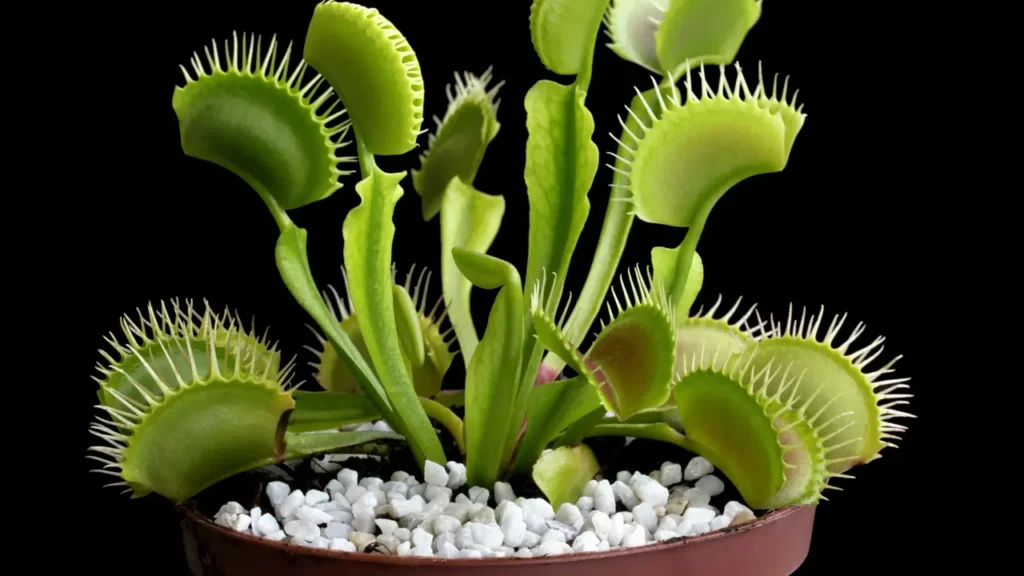
Growing Carnivorous Plants at Home
- Many carnivorous plants can be grown indoors or outdoors in a bright, sunny area. Any windowsill in the north will be fine. The plants also work with a timer set at 12-14 hours.
- They can be grown inwards, but they need a constant supply of waterr. The easiest way is to put them in an aquarium or a saucer and keep them in water.
- Carnivorous plants can easily grow in normal room temperatures. Avoid species that might need very warm or very cool temperatures.
- They can acquire the nutrients they need by collecting enough insects.
Conclusion
In conclusion, the world of carnivorous plants mesmerizes, showcasing nature’s ingenuity in the most unexpected ways. From the captivating Venus Flytrap to the delicate Bladderworts, each flesh-eating plant exhibits unique adaptations that allow it to thrive in nutrient-poor environments. By exploring thesten10 carnivorous plants, we’ve uncovered the fascinating mechanisms they employ to capture and digest their prey, demonstrating the incredible diversity within this plant group.
These carnivorous plants highlight the complexity of nature’s survival strategies and underscore their ecological importance in maintaining balance within their habitats. As you reflect on the wonders of these flesh-eating plants, we hope you gain a deeper understanding of their role in the natural world and the remarkable adaptations that have evolved.
FAQ’s
1. What are carnivorous plants, and how do they capture their prey?
Carnivorous plants are unique species that derive some or most of their nutrients from grabbing and eating animals or protozoans, typically insects and other arthropods. They have evolved various mechanisms to capture prey, such as sticky surfaces, pitfall traps, snap traps, and suction traps. For instance, the Venus flytrap uses modified leaves that are immediately suited when trigger hairs are touched, while pitcher plants lure prey into deep cavities filled with digestive enzymes.
2. Why do carnivorous plants consume insects and other small animals?
Carnivorous plants consume insects and other small animals to supplement their nutrient intake, especially in environments where the soil is poor in essential nutrients like nitrogen and phosphorus. These plants have adapted to nutrient-deficient habitats by evolving mechanisms to capture and digest prey, allowing them to thrive where other plants cannot.
3. Can carnivorous plants survive without consuming insects?
While carnivorous plants can survive without consuming insects, they may not thrive or grow as robustly. In nutrient-rich environments, they can absorb nutrients from the soil, but in their natural habitats, the additional nutrients from prey are crucial for optimal growth and reproduction. Without insects, these plants might exhibit stunted growth and reduced vigor.
4. What are the best conditions for growing carnivorous plants at home?
Carnivorous plants generally require specific conditions to thrive, including high humidity, plenty of sunlight, and nutrient-poor, acidic soil. Distilled or rainwater is essential, as tap water can contain harmful minerals to these plants. An appropriate environment mimicking their natural habitat, such as a terrarium, can help ensure their health and growth.
5. Are all carnivorous plants difficult to care for?
Not all carnivorous plants are difficult to care for; some are suitable for beginners. For instance, Venus Flytraps, Sundews, and certain Pitcher Plants are relatively easy to grow with proper care. They require consistent moisture, bright light, and specific soil conditions but can be hardy once their needs are met.
6. How do carnivorous plants benefit the ecosystem?
Carnivorous plants play a significant role in their ecosystems by helping control insect populations and lowering the spread of diseases caused by pests. Additionally, they contribute to nutrient cycling in nutrient-poor environments, aiding in the decomposition process and supporting the overall health of their habitats. Their presence also adds to the biodiversity and ecological complexity of their regions.
References
- Pain, S., & Knowable Magazine. (2022, March 9). How carnivorous plants evolved. Smithsonian Magazine. https://www.smithsonianmag.com/science-nature/how-carnivorous-plants-evolved-180979697/
- Szesze, M. (2018, May 7). Types of carnivorous plants. Carnivorous Plant Nursery. https://carnivorousplantnursery.com/blogs/general-growing-and-care/types-of-carnivorous-plants
- The Editors of Encyclopedia Britannica. (2024). Venus flytrap. In Encyclopedia Britannica.
- Common butterwort. (n.d.). Wildlifetrusts.org. Retrieved June 15, 2024, from https://www.wildlifetrusts.org/wildlife-explorer/wildflowers/common-butterwort
- Cobra Lily (Darlingtonia californica). (2017, February 6). Carnivorous Plant Resource. https://www.carnivorousplantresource.com/the-plants/cobra-lily/
- Tropical pitcher plants (Nepenthes). (n.d.). PredatoryPlants. Retrieved June 15, 2024, from https://predatoryplants.com/blogs/plant-care/tropical-pitcher-plants-nepenthes
- Szesze, M. (2018a, May 7). Genlisea. Carnivorous Plant Nursery. https://carnivorousplantnursery.com/blogs/carnivorous-plants-by-genus/genlisea
- Szesze, M. (2018c, May 7). Uses of carnivorous Plants. Carnivorous Plant Nursery. https://carnivorousplantnursery.com/blogs/cpn-blog/uses-of-carnivorous-plants
- Szesze, M. (2018a, May 6). Carnivorous plants growing & care. Carnivorous Plant Nursery. https://carnivorousplantnursery.com/blogs/general-growing-and-care/carnivorous-plants-growing-care





